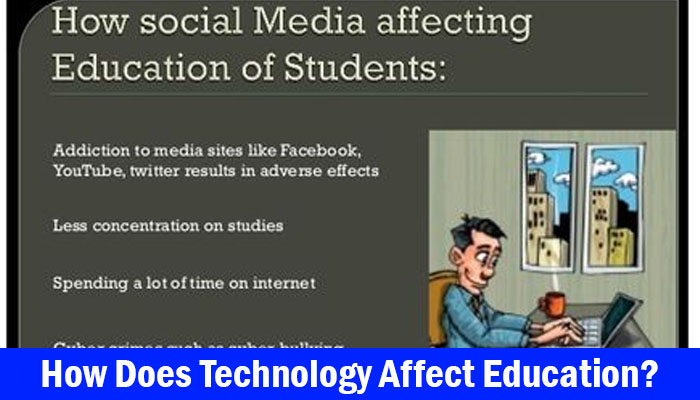How Does Technology Affect Education?
How does technology affect education? Increasingly, teachers are using technology to replace old-style rote learning with personalized learning experiences. The advent of interactive teaching methods, such as wikis, video lectures, and virtual classrooms, has changed the way teachers approach education. In addition to creating individualized learning experiences, technologies have enabled collaborative work and multiuser conversations that make for better outcomes for students. In addition, more students are creating digital content and working with others from across the globe.
Today, students can access information in an instant. Rather than memorizing things, they can access the same information at any time. This can save a lot of time for teachers, as their time can be spent on discerning what is good and what is bad. With these advancements, technology is transforming how schools teach and learn. A flipped classroom allows students to study information and apply it during class. In addition, many schools have started incorporating technologies like tablets into the curriculum, which helps teachers make their classes more effective.
Earlier, students relied on textbooks and teachers as their primary source of information. They used to read books and hear lectures and use the books to remember facts and figures. With today’s technological advances, students can search for information and learn from multiple sources. It also simplifies the research process. With the use of the internet, students can collect more information and gain more knowledge. The use of technology in the classroom is transforming the way students learn.
With students now being able to access information instantly, learning has become more engaging. The new tools available to students have improved their motivation levels and increased their engagement in the classroom. For example, students no longer need to memorize information to understand a lesson. This means that the time spent memorizing information can be better spent on identifying what is good and what is not. Likewise, technology has made classroom activities more flexible and interactive. Unlike traditional methods, students can now “flip” the learning process, which involves the teacher teaching the material to the students rather than the other way around.
Technology has improved the way children learn. Rather than memorizing facts and studying them, students can access information instantly on their mobile devices. This has increased the number of opportunities for young children. With technology, students can study information as homework and apply it in class, which means that they can gain more advanced skills. Further, students can also explore a variety of new subjects. As a result, they can learn more about complex concepts and learn more quickly.
As a result, technology has changed the way that students learn. Instead of memorizing facts, they can use technology to create and share videos. By using a computer, students can easily create their own videos. This changes the way teachers teach. Often, this is the only way to ensure that every student is learning. Moreover, technology has also improved the quality of learning. When a student has access to a device, he or she will be able to access information instantly and can use it in class.
The impact of technology on education has been profound. It has opened up many opportunities for students to learn, and it has greatly increased access to knowledge. Historically, books were rare and only the elite could afford to attend school. Those days are over. Now, massive amounts of information are available online, and formal learning is readily accessible anywhere in the world. Whether it is through podcasts, Khan Academy, or traditional online degree programs, it is important to understand how the changes affect education.
Despite the many changes that technology has brought to education, this is one area where technology has had a positive impact. It has allowed students to access information instantly and has facilitated collaboration between generations. Moreover, the use of technology in education has changed the way teachers teach. According to Dr. Matthew Lynch, author of TechEd, “technology has made learning more interactive and collaborative.” In addition to improving the quality of education, it also improves student motivation and fosters connections between generations.
